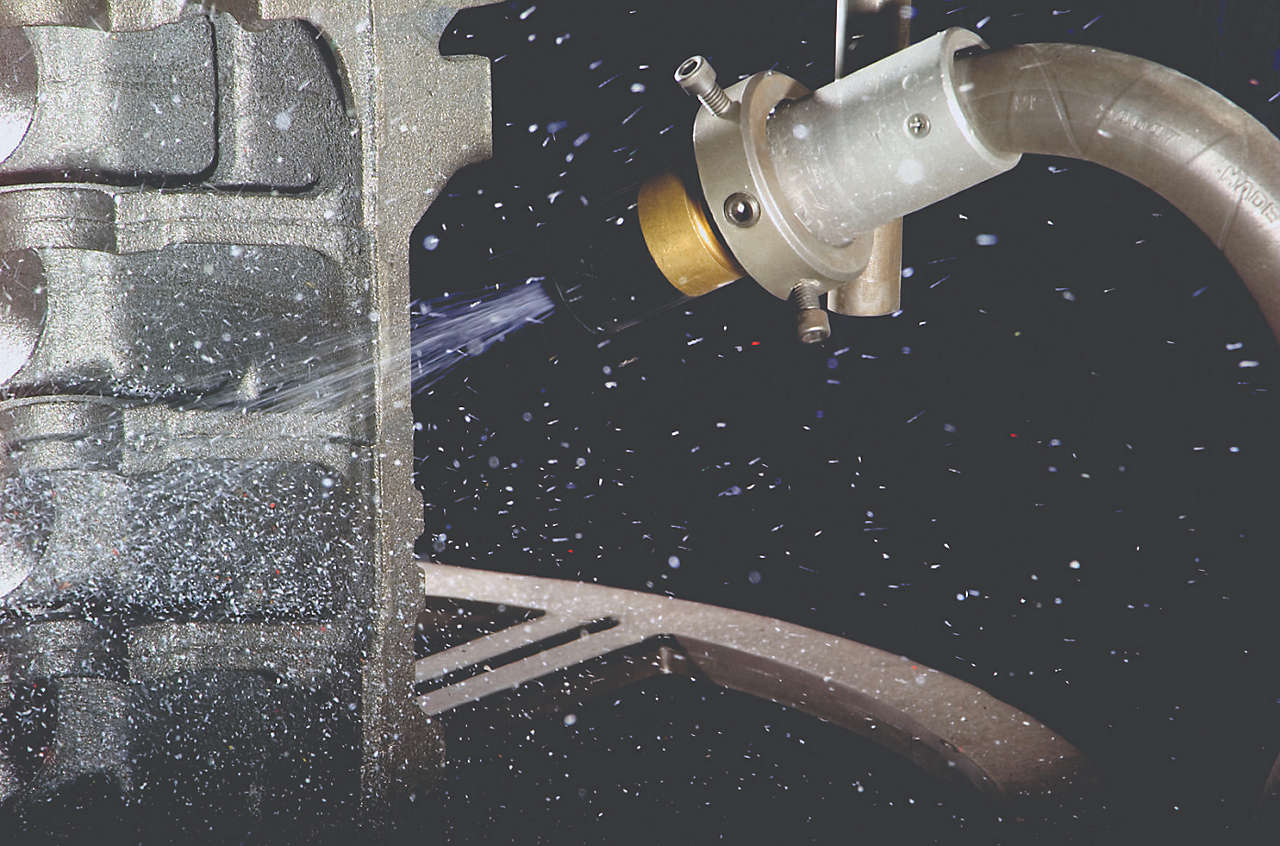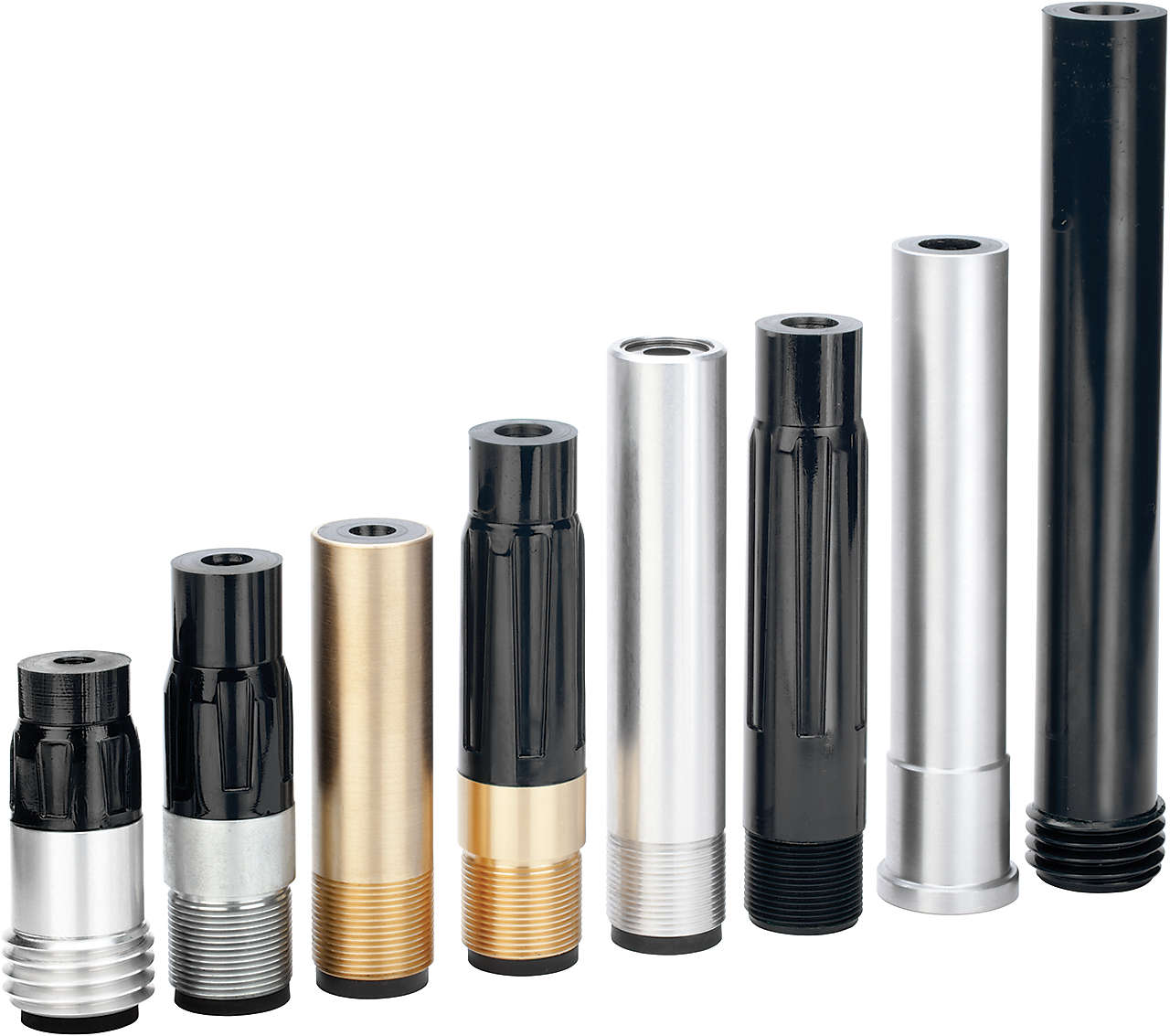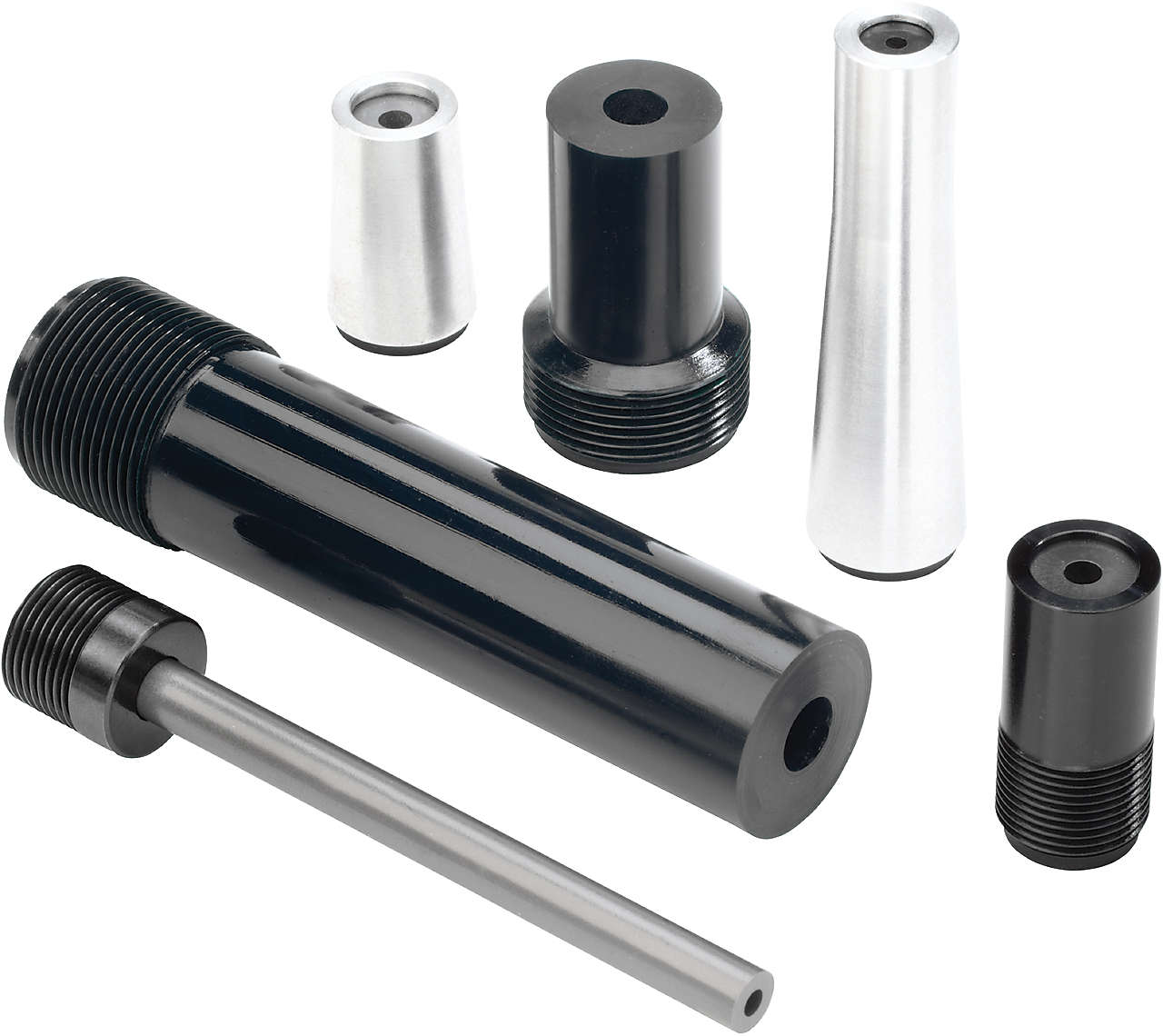How to Choose the Right Blast Nozzle for Abrasive Blasting
November, 2, 2023
November, 2, 2023

A blast nozzle is a device used to propel abrasive particles at a surface at high velocity to smooth a rough surface, roughen a smooth surface, shape a surface, or remove surface contaminants. Blast nozzles are used in a variety of applications across many industries.

A grouping of long Venturi blast nozzles.
Blast nozzles are typically made of steel, alumina, tungsten carbide, silicon nitride, silicon carbide, boron carbide, and ROCTEC™. The nozzle material is important because it affects the durability and wear resistance of the nozzle. Tungsten carbide nozzles are the most common type and are a good choice for general-purpose blasting. Alumina nozzles are lower-priced than carbide nozzles but they are not as durable.
The type of abrasive you use will also affect impact the nozzle service lifesize you need. Finer, harder, and sharper abrasives , such as sand, require smaller nozzles than coarser abrasives result in shorter nozzle service life, such as steel shot.

Straight-Bore Nozzles
In addition to the essential PPE listed above, workers may also need to wear other PPE depending on the specific abrasive blasting operation being performed. For example, workers who are abrasive blasting with materials that contain lead or other hazardous materials may need to wear additional respiratory protection and clothing.
It is important to note that all PPE must be properly fitted and maintained in order to be effective. Workers should be trained on how to properly use and maintain their PPE.
Blast nozzles are an essential part of any abrasive blasting system. By choosing the right type of nozzle for your application, you can ensure that you get the best results from your blasting process.
Consider the nozzle material. Blast nozzles are typically made of steel, aluminum, or carbide. Steel nozzles are the most common type and are a good choice for general-purpose blasting. Aluminum nozzles are more lightweight and less expensive than steel nozzles, but they are not as durable. Carbide nozzles are the most durable type of nozzle, but they are also the most expensive.
Select the nozzle size. The nozzle size is determined by the diameter of the nozzle opening. The smaller the nozzle opening, the higher the pressure and velocity of the abrasive blast. Nozzles with smaller openings are typically used for surface preparation, while nozzles with larger openings are used for cleaning and descaling.
Choose the right abrasive. The type of abrasive you use will also affect the nozzle size you need. Finer abrasives, such as sand, require smaller nozzles than coarser abrasives, such as steel shot.
Consider the blast pressure. The blast pressure is the amount of force that is used to propel the abrasive through the nozzle. The higher the blast pressure, the more aggressive the blasting process will be. However, too much blast pressure can damage the surface being blasted.
Take safety precautions. When using a blast nozzle, it is important to wear safety glasses, a dust mask, and hearing protection. It is also important to keep the nozzle clean to prevent clogging.
Here are some additional tips for choosing the right blast nozzle for abrasive blasting:
If you are not sure what type of nozzle to use, contact us, and our nozzle experts can diagnose and solve your toughest blasting challenges.
Make sure the nozzle is compatible with your blasting equipment.
Inspect the nozzle regularly for wear and tear. Replace the nozzle as needed.

Nozzle Air and Pressure Requirements Chart
Please select a file to download
Models
. Please enter the desired qty for the material(s) you want to include in your promotion or Proceed Without Promotion and only your base materials will be added to the cart.
Minimum quantity should be
| SAP Material Number | ISO Catalog Number | Grade |
|---|
Thank you for your registration, pending approval & completion of the registration, your access is currently limited. Full utilization of product search capabilities & collaboration space is available and will remain. Please allow 2 business days for registration completion.
Thank you for your successful registration. You now have immediate access to log in and utilize the site.
You are about to leave the Solution building process.
Are you sure you want to leave?